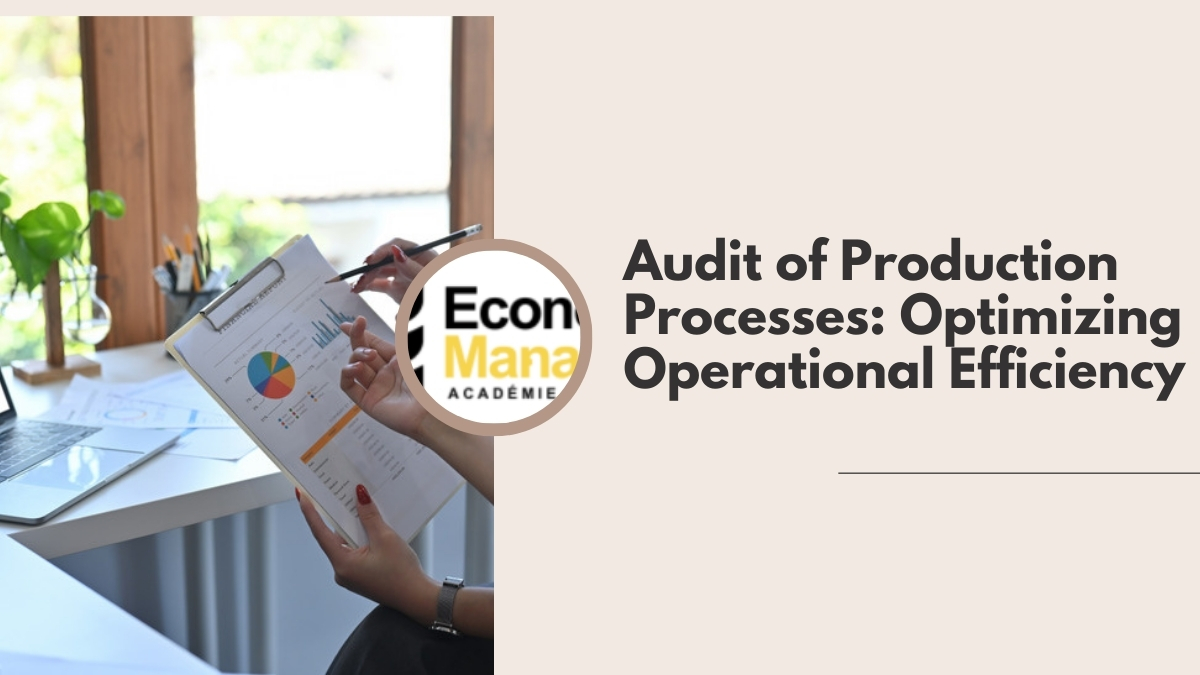Table de matières
Introduction
An internal audit can be a daunting prospect for any business, but with thorough preparation, it can be a smooth and beneficial process. In this article, we will guide you through the steps to ensure a successful internal audit, minimizing disruptions to your operations and helping you gain valuable insights into your organization’s processes.
Preparing for an internal audit is a complex task, and it involves a significant amount of work, but with the right approach, it can be a transformative opportunity for your business. This article aims to provide a friendly yet informative guide, offering adaptable strategies to suit your business needs and ensuring you are fully equipped for the audit process.
Understanding the Purpose of an Internal Audit
An internal audit is an independent, objective assurance and consulting activity designed to add value and improve an organization’s operations. It helps an organization accomplish its objectives by bringing a systematic, disciplined approach to evaluate and improve the effectiveness of risk management, control, and governance processes.
The purpose of an internal audit is not to catch employees doing something wrong or to find fault with existing processes. Instead, it is a constructive process aimed at identifying areas for improvement and ensuring the organization is running efficiently and effectively, while also meeting compliance standards.
Lire Aussi: Tendances émergentes de la gestion financière
Step-by-Step Guide to Preparing for an Internal Audit
1. Define the Scope and Objectives
The first step is to clearly define the scope and objectives of the audit. This involves identifying the specific areas of your organization that will be under review. Is it a specific department, function, or process? Are there particular regulations or standards you need to adhere to?
For example, the scope could be defined as « evaluating the effectiveness of financial controls in the accounts payable department to ensure compliance with industry regulations. » Having a well-defined scope helps focus the audit and ensures all stakeholders understand the objectives.
2. Assemble the Right Team
Preparing for an internal audit is a collaborative effort, and you will need to assemble a diverse team with the right skills and knowledge. This team should include representatives from the areas being audited, as well as individuals with a thorough understanding of your organization’s processes and goals.
Lire Aussi: Les principes comptables fondamentaux
The team should be led by a qualified internal auditor or a senior member of staff with experience in audit preparation. This leader will be responsible for coordinating the efforts of the team and ensuring that the audit runs smoothly. It is essential that all team members understand their roles and responsibilities, and clear communication channels are established from the outset.
3. Create a Comprehensive Plan
Once the team is in place, develop a detailed plan of action. Start by reviewing the audit objectives and break them down into manageable tasks. Identify the specific documents, data, and information that will be required, and assign team members to gather and organize this material.
Your plan should also include a timeline with key milestones, ensuring that all tasks are completed in a timely manner ahead of the audit. It is beneficial to work backwards from the audit date, allocating sufficient time for each stage of preparation.
Lire Aussi: Rationality in the microeconomic approach
For example, if the audit is scheduled for six weeks from now, your plan might include the following milestones:
- Week 1: Define scope and assemble team
- Week 2: Develop and finalize the audit plan
- Week 3: Gather and review relevant documents and data
- Week 4: Identify and address any gaps or issues
- Week 5: Finalize preparations and conduct a trial run
- Week 6: Audit commencement
By setting clear milestones, you can ensure that the preparation process stays on track and that no important tasks are overlooked.
4. Gather and Review Documents and Data
One of the most critical aspects of preparing for an internal audit is gathering and reviewing the necessary documents and data. This will vary depending on the scope of your audit but may include financial records, policies and procedures, compliance reports, risk assessments, and internal controls documentation.
It is essential that this information is accurate, up-to-date, and well-organized. The audit team should be able to easily access and understand the documentation, as this will form the basis of their assessment.
Here are some tips to consider when gathering and reviewing documents:
- Start early: Don’t leave document collection until the last minute. Give yourself ample time to locate and collate all the necessary information.
- Be thorough: Ensure you provide a complete set of documents that cover all aspects of the audit scope.
- Ensure accuracy: Verify the accuracy of the information provided. Outdated or incorrect data can lead to misleading conclusions.
- Organize logically: Develop a filing system that makes sense to the audit team. Group documents by topic or function to aid understanding and speed up the review process.
5. Identify and Address Gaps or Issues
As you review your documentation and data, you may uncover gaps or areas of non-compliance. It is important to be proactive in addressing these issues before the audit commences. Identify any weaknesses in your processes and take steps to rectify them, implementing new controls or updating policies where necessary.
For example, if the audit scope includes reviewing health and safety procedures, and you discover that employee training records are not up to date, take immediate action to address this. Arrange for the necessary training to be conducted and ensure that records are accurately maintained going forward.
By identifying and resolving issues ahead of time, you demonstrate a commitment to continuous improvement and reduce the likelihood of unfavorable findings during the audit.
6. Finalize Preparations and Conduct a Trial Run
In the lead-up to the audit, it is beneficial to conduct a trial run or dry test. This involves walking through the audit process as if it were the real thing. It helps to identify any last-minute issues or oversights and ensures that your team is fully prepared for the actual audit.
During the trial run, pay attention to the following:
- Are all the necessary documents readily accessible?
- Are there any gaps in the information provided?
- Are your team members familiar with the audit process and their roles?
- Are there any logistical issues, such as room bookings or IT requirements, that need addressing?
By conducting this trial run, you can fine-tune your preparations and ensure that everything runs smoothly on the day of the audit.
7. Collaborate with the Auditors
Throughout the preparation process, maintain open lines of communication with the internal audit team. Collaborating with the auditors helps to ensure that your efforts are aligned with their expectations. They can provide valuable insights and guidance, ensuring that your preparations are on the right track.
Discuss the audit plan with them and seek clarification on any aspects that are unclear. Provide updates on your progress and highlight any concerns or challenges you have encountered. By fostering a collaborative relationship, you can avoid surprises during the audit and increase the likelihood of a positive outcome.
8. Learn from the Audit and Implement Improvements
The internal audit process does not end once the auditors have completed their assessment. It is important to view the audit as an opportunity for continuous improvement. Once you receive the audit report, carefully review the findings and recommendations.
Identify the areas where improvements can be made and develop an action plan to address them. Implement corrective measures and ensure that they are sustained over the long term. By doing so, you demonstrate the value of the audit process and contribute to the overall effectiveness of your organization.
Conclusion
Preparing for an internal audit is a detailed and complex process that requires careful planning and execution. By following the steps outlined in this article, you can approach the audit with confidence, knowing that you have taken the necessary steps to ensure a successful outcome.
Through collaboration, thorough preparation, and a commitment to continuous improvement, your organization can benefit from valuable insights and enhanced operational efficiency. Remember that the internal audit is a tool to help your business thrive, and by embracing the process, you can achieve your organizational goals and maintain strong governance and compliance practices.







